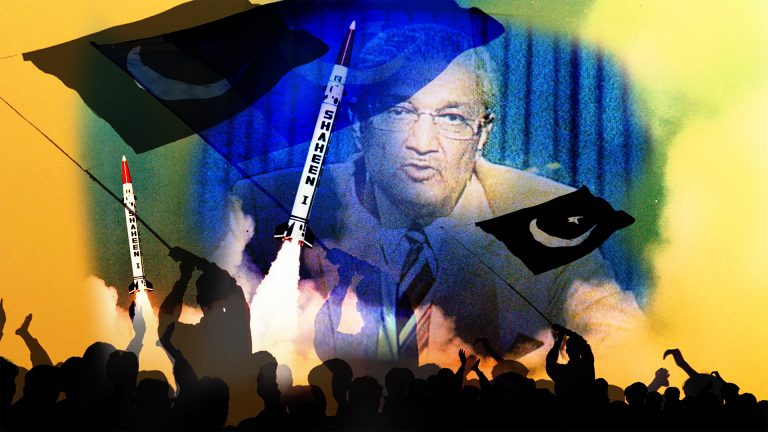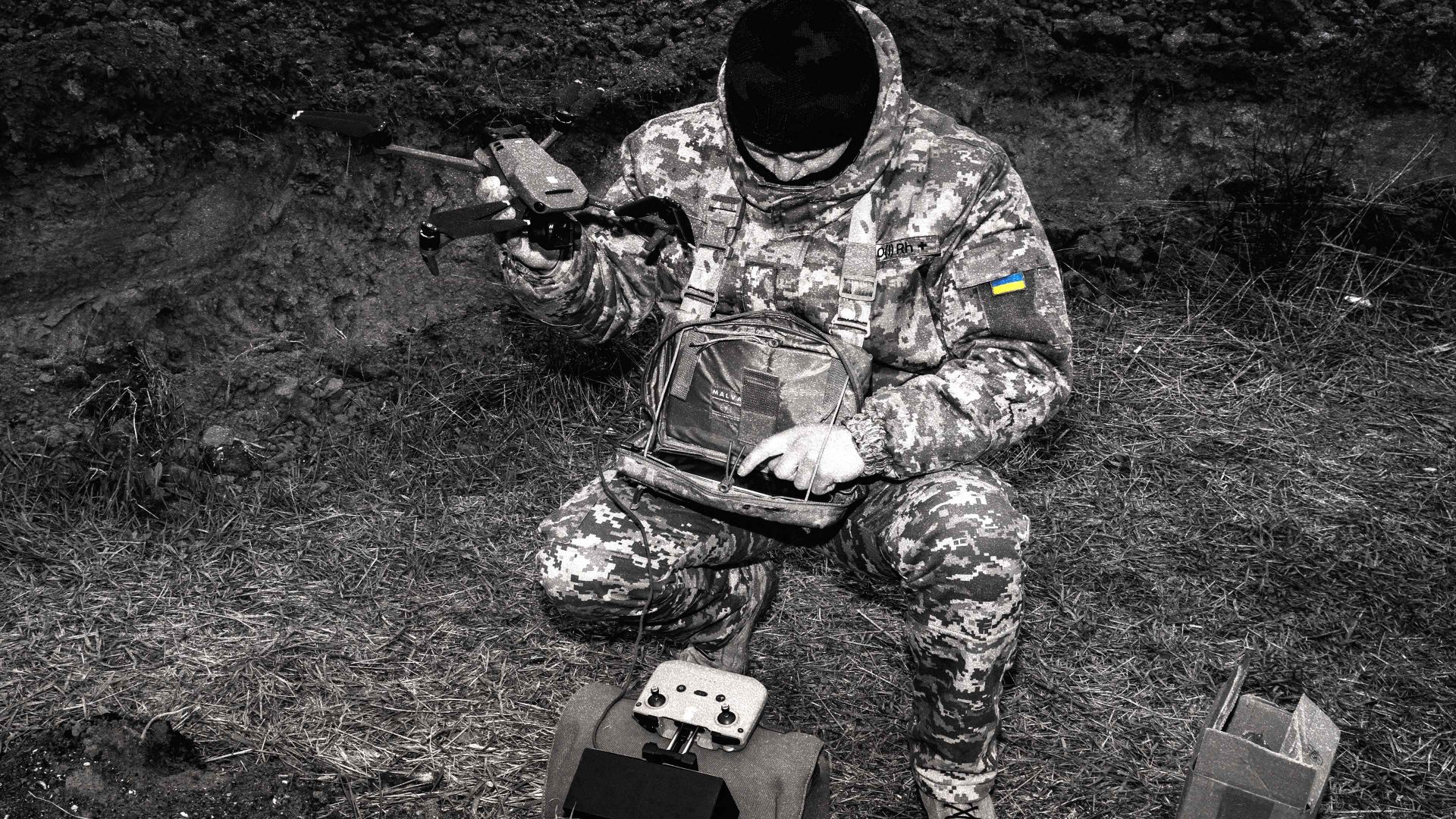Orville Wright flew the first plane on December 17, 1903. In a moment that is now an indelible part of the story of human progress, Wright’s creation remained airborne for 12 seconds above the sand dunes of Kitty Hawk, North Carolina. Much less well known is another flight that Wright witnessed, on October 2, 1918, the consequences of which are perhaps only now being properly understood. At Camp Alfred Vail, in New Jersey on that day over a century ago, Orville Wright watched the first ever flight of an explosive-laden drone.
He had developed the remote-controlled pilotless aircraft with Charles Kettering who later went on to found the Sloan Kettering Hospital in New York. The remote-controlled bi-plane they devised was packed with 180 pounds of explosive, had a range of 40 miles and was designed to fly over enemy lines. The mechanism itself was extremely cumbersome – once in position, its wings would fall off and the explosive laden fuselage would crash to the ground. Fifty of these weapons were built, but the truce of November 1918 meant that none was ever deployed.
Wright and Kettering’s unmanned flying weapon was known as the “Kettering Bug” – the term drone did not arrive until the 1930s when Royal Navy gunners began using pilotless planes for gunnery practice, and the sound of the engines reminded them of bees, hence the name. But the idea that unmanned craft could be used as a weapon lay mostly dormant until the final stages of the Second World War when American bombers were packed with explosives and remotely flown to German targets.
That project was codenamed “Operation Aphrodite” and though the planes could be remotely guided there were problems getting them off the ground and arming the explosives. On August 14, 1944, a US airman named Joe Kennedy volunteered to get one of these flying bombs up into the air, arm the explosives and then bail out. Unfortunately the plane exploded before Kennedy could jump. And so John F Kennedy’s elder brother was one of the first – perhaps the first ever – American to be killed by a drone.
During the early stages of the Cold War both the US and Soviet Union developed drones for reconnaissance purposes. America’s Ryan Firebee aircraft, first flown in 1951, was used extensively for reconnaissance in Vietnam and China, and these were mainly air launched from under the wing of an adapted bomber. Once they had completed their mission they released a parachute and another bomber would scoop them up as they fell.
The Soviets developed the Tupolev series of reconnaissance drones, introducing the TU-123 in 1964 which had a range that covered western Europe and the Middle East. In the 1970s, Israel entered the drone reconnaissance business and their Scout and Pioneer drones played a major role during the Yom Kippur War of 1973 and the Lebanon War of 1982. That was when things started to change.
Israel’s experience and use of drones deeply influenced US military thinking in the 1991 Gulf War, but it was not until after 9/11 that drones began to be used for attack purposes. The first known drone strike was in Yemen against Ali Qaed Senyan al Harithi who was involved in the October 2000 al-Qaeda bombing of the USS Cole, in which 17 Navy personnel died. A CIA-operated drone, adapted from a previous Israeli model, fired a missile at a car in which al Harithi was travelling along with five other suspected terrorists.
Attack drones quickly became a mainstay of the US military and CIA. By the end of 2024, there had been hundreds of drone strikes in Yemen, Pakistan, Somalia, Syria and Iraq, and thousands in Afghanistan.
The cost of drones technology meant that they quickly became a monopoly of wealthy states. A single MQ-1 predator drone – the kind used in the killing of al Harithi – cost $5m. But that price tag did not include the infrastructure required to operate it, which added another $40m per system. Each missile cost $100,000.
But things have changed dramatically since the days of the war on terror. Drones are no longer the exclusive domain of wealthy nation-states and instead, small, cheap, commercial or modified drones have become decisive tools across the battlefield. In the Ukraine War, the drone has become the essential weapon of everyman’s army.
Suggested Reading

The father of Iran’s nuclear programme
The first drones used by the Ukrainian side were the Turkish-produced Bayraktar TB2s, which proved remarkably effective against armour and supply convoys. But they carried more than just explosives – the Bayraktar also had mounted cameras, which created dramatic footage of the drone approaching its target. The images of Ukrainian drones plunging into Russian tanks helped galvanize international support for Kyiv.
Another widely used Ukrainian drone is the DJI, produced by the Chinese company Da-Jiang Innovations. A cheap one of those can cost $300, while the more expensive models cost $20,000 and are equipped with cameras with telescopic lenses. The Ukrainians have adapted these with a release mechanism that allows them to attach and drop grenades, mortar shells and small bombs. The normal DJI battery has a life of 45-minutes before it has to be recharged, so it can only be used in battlefield operations.
Then there are the FPV or First Person View Drones. These cost between $200 and $3,000 apiece and are generally racing drones which have been turned into unmanned Kamikaze-type devices, used to attack vehicles, trenches and even individual soldiers. Both Russia and Ukraine have used thousands of these.
For long distance attacks, Ukraine has a series of domestically-produced drones. The Liutyi has a range of 2,000 kilometres and can carry a payload of up to 75kg – this was the type used in the attacks on Moscow. Other types of drones can be used as part of a swarm, and one model, named the Dragon Drone, is even equipped with molten thermite, an incendiary substance that can be sprayed on Russian fortifications and armoured vehicles. It’s a flying flamethrower.
For their part, the Russians have relied mainly on missiles and aircraft. They have, however, made extensive use of reconnaissance drones and Iran has supplied Moscow with the Shahed-131 which has a range of 900kms. Russia is also researching the use of AI technology to develop the next generation of drones, for both attack and reconnaissance purposes.
Drones started life as remote-controlled bombs, and during the Cold War years were refined into a reconnaissance tool. Now they are both, and since the price of the technology has dropped so dramatically, the Ukraine War has established that drones have become an integral part of human conflict. They are to the 21st century what the longbow was to the Middle Ages and aeroplanes and tanks were to the 20th century. But like many military innovations of the past, drones come with heavy moral baggage.
Is it right that a person can be killed by a bomb carried by a drone and operated by a person sitting in a hardened bunker with a joystick thousands of miles away? Drones appear to reduce modern warfare to the level of a computer game and in doing so dehumanise the people involved. But they also offer a dangerously antiseptic view of what war can be, in which a nation can conduct military operations that involve almost no human risk to their own side. The danger is that it will make conflict more likely. If no lives are on the line – at least, on your side – then a significant barrier to warfare has simply been removed.
Orville Wright first glimpsed this new way of warfare over a hundred years ago on a New Jersey airfield. The drone offers a new way of fighting – but perhaps more significantly it provides a new way of looking at the enemy. Now that he can simply be dispatched at the press of a button, does that make it more likely that we will kill our adversary rather than attempt to reach agreements through diplomacy? Does the drone destroy not only tanks, bunkers and human flesh, but also our ability to compromise?











